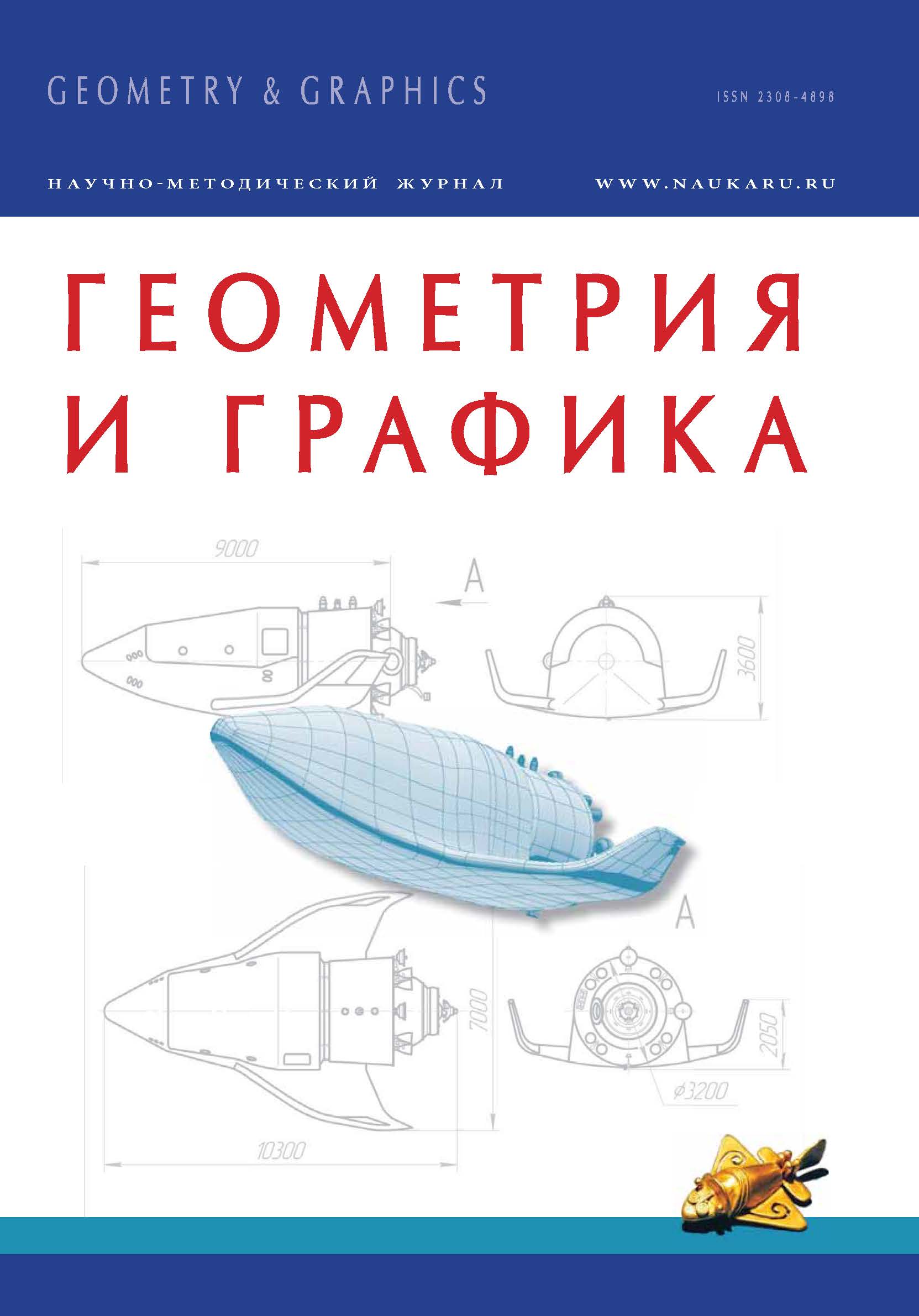Moskva, Moscow, Russian Federation
The publication is devoted to the analysis and justification of questions of teaching one of the most important sections of the course "Descriptive geometry" "Geometrical transformations". On the basis of critical analysis suggestions are made for improvement of a presentation technique of this section in the classroom and in academic literature, as well as for extension of application of geometrical transformations for the solution of position and metric tasks, surfaces modelling, and also for design of complex engineering forms that meets certain preassigned conditions.It is offered to make a number of considerable amendments to the terms and definitions used in the existing courses of descriptive geometry. Some conclusions are made, and the appropriate proposals on feasibility of coordination of movementtransformationteachingin the courses of analytical and descriptive geometry are made. It will provide interdisciplinary communications and allow students to be convinced in usefulness and expediency of a combination of analytical and graphic ways of geometric tasks solution. Implementation of these suggestions contained in the article will contribute to a real transformation of engineering and geometrical training and as a consequence, the quality of training specialists.
descriptive geometry, engineering geometry, geometrical transformations, modeling of surfaces interfacing a surface, position and metric tasks, scientific and research work of students.
Введение. Геометрические преобразования входят в число основных разделов начертательной геометрии и предназначены для упрощения решения позиционных и метрических задач. Они широко используются в инженерной графике при построении основных, дополнительных, местных видов, а также вынесенных сечений. Создание твердотельных моделей в компьютерной графике способом «выдавливания» [1; 5; 13] основано на последовательном выполнении их сечений как метрических, аффинных, проективно зависимых от исходного контура. В связи с этим настоящая публикация посвящена анализу и обоснованию вопросов преподавания одного из важнейших разделов курса «Геометрические преобразования», а именно:
- критическому анализу содержания и методики преподавания этого раздела в существующих учебниках начертательной геометрии;
- предложениям авторов статьи к изложению материала указанной темы с учетом современных требований подготовки инженерных кадров.
1. Asekritova S.V. Specifika razrabotki konstruktorskoj dokumentacii v uslovijah avtomatizacii proizvodstva [Specifics of design documentation development in production automation conditions]. Geometrija i grafika [Geometry and Graphics]. 2013, v. 1, i. 3-4, pp. 36-39. DOI:https://doi.org/10.12737/2131. (in Russian).
2. Voloshinov D.V. O perspektivah razvitija geometrii i ee instrumentarija [About Prospects of Development of Geometry and Its Tools]. Geometrija i grafika. [Geometry and Graphics]. 2014, v. 2, i. 1, pp. 15-21. DOI:https://doi.org/10.12737/3844. (in Russian).
3. Vyshnepolskiy V.I., Salkov N.A. Celi i metodi obucheniya graficheskim disciplinam [Objectives and methods of teaching to graphic disciplines]. Geometriya i grafika [Geometry and Graphics]. 2013, v. 1, i. 2, pp. 8-9. DOI:https://doi.org/10.12737/777. (in Russian).
4. Gordon V.O., Semencov-Ogievskij M.A. Kurs nachertatel´noj geometrii [The course of descriptive geometry]. Moscow, Vyssh. shk. Publ., 2000. (in Russian).
5. Guznenkov V.N., Zhurbenko P.A. Autodesk Inventor 2012. Trehmernoe modelirovanie detalej i sozdanie chertezhej [Threedimensional modeling of parts and drawing creation]. Moscow, DMK Press Publ., 2012. (in Russian).
6. Zhirnyh B.G., Novoselova L.V. Rabochaja tetrad´ dlja zapisi lekcij po nachertatel´noj geometrii [Workbook for recording lectures on descriptive geometry]. Moscow, BMSTU Publ., 2013. (in Russian).
7. Ivanov G.S. Kompetentnostniy podhod k soderjaniyu kursa nachertatelnoy geometrii [Competence approach to the course content of descriptive geometry]. Geometriya i grafika [Geometry and Graphics]. 2013, v. 1, i. 2, pp. 3-5. DOI:https://doi.org/10.12737/775 (in Russian).
8. Ivanov G.S. Nachertatel´naja geometrija [Descriptive geometry]. Moscow, MSUL Publ., 2012. (in Russian).
9. Ivanov G.S. Perspektivy nachertatelnoy geometrii kak uchebnoy discpliny [Perspectives of descriptive geometry as a discipline]. Geometriya i grafika [Geometry and Graphics]. 2013, v. 1, i. 1, pp. 26-27. DOI:https://doi.org/10.12737/467 (in Russian).
10. 10. Ivanov G.S. Teoreticheskie osnovy nachertatel´noj geometrii [Theoretical Foundations of descriptive geometry]. Moscow, Mashinostroenie Publ., 1998. (in Russian).
11. Ignat´ev E.P. Development of the geometric modeling method for technical forms of machine-building products. Sbornik materialov IV Mezhdunarodnoj nauchno-prakticheskoj konferencii studentov, aspirantov i molodyh uchenyh [Sourcebook of the IV International scientific-practical conference of students, graduate students and young scientists]. Tomsk, 2010, pp. 327-329. (in Russian).
12. Klein F. Vysshaja geometrija [Higher geometry]. Moscow, Librokom Publ., 2009.
13. Novozhilova S.A., Egorycheva E.V. Information support of modern technologies of training to graphic disciplines. Geometrija i grafika [Geometry and Graphics]. 2013, v. 1, i. 3-4, pp. 33-35. DOI:https://doi.org/10.12737/2130. (in Russian).
14. Pjatanin P.S., Vladimirova V.V. Nonlinear involution as a basic method of geometric modeling of complex technical forms. Molodezhnyj nauchno-tehnicheskij vestnik [Youth Science and Technology Gazette], 2014, i. 11. Available at: http://sntbul.bmstu.ru/doc/741128.html (Accessed 25 May 2014). (in Russian).
15. Seregin V.I., Ivanov G.S., Dmitrieva I.M., Murav´ev K.A. Mezhdisciplinarnye svjazi nachertatel´noj geometrii i smezhnyh razdelov vysshej matematiki [Interdisciplinary connections of descriptive geometry and related sections of higher mathematics]. Geometrija i grafika [Geometry and Graphics]. 2014, v. 2, i. 3-4, pp. 8-12. DOI:https://doi.org/10.12737/2124. (in Russian).






